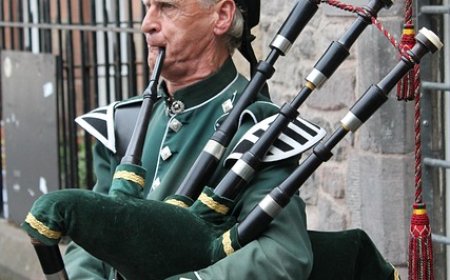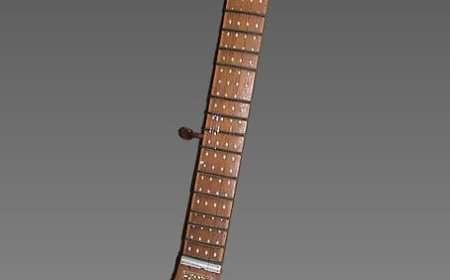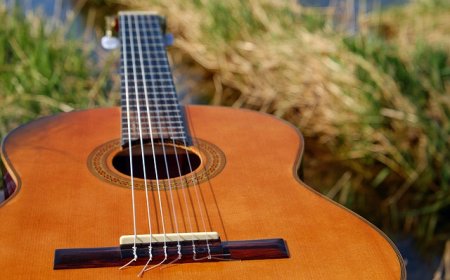Marimba Facts for Students | Learn How the Marimba Works & Its History
Explore the marimba—its parts, how it works, history, famous players, and fun facts. A complete and student-friendly guide to this beautiful percussion instrument.
🥇 Introduction
The marimba is one of the most beautiful and expressive instruments in the percussion family. It looks similar to a xylophone, with bars arranged like piano keys, but it has a deeper, warmer sound and a wider range. Marimbas are often used in concert bands, solo performances, percussion ensembles, and sometimes even in movie music and jazz. Its mellow tone makes it ideal for emotional and melodic music.
🎶 What Is a Marimba?
A marimba is a pitched percussion instrument with wooden bars that are struck with mallets to produce musical notes. The bars are arranged like a keyboard, and underneath each one is a resonator tube, which helps to make the sound louder and more full.
Marimbas usually have a range of 4 to 5 octaves, giving them the ability to play melodies, harmonies, and chords. They are larger and lower in pitch than xylophones, with a richer, more resonant tone. The marimba is typically played with two to four mallets (or more!) and is loved by both soloists and ensemble musicians.
🧩 Parts of the Marimba
The marimba is a complex and carefully built instrument. Its main parts include:
Bars – Made of rosewood or synthetic materials, tuned to exact pitches.
Resonators – Long metal tubes beneath each bar that amplify and enrich the sound.
Frame – The stand that holds everything in place, sometimes with wheels for easy moving.
Rails – Wooden beams that support the bars above the resonators.
Mallets – Soft or medium mallets with yarn or rubber heads, used to strike the bars.
Each bar has a precise length and width, and even a curved bottom, which helps it produce its perfect note.
⚙️ How Does the Marimba Work?
The marimba works through vibration and resonance. When a bar is struck with a mallet, it vibrates and creates sound. That vibration causes the air inside the resonator tubes to vibrate as well, which makes the sound louder, fuller, and deeper.
The longer and wider the bar, the lower the pitch. The shorter and thinner the bar, the higher the pitch. Players can control the sound by choosing different mallets and striking in different areas of the bar. Striking the center produces a loud, rich tone, while striking the edge gives a softer sound.
Marimbists often use four mallets (two in each hand) to play complex music with chords and melodies. It takes both technical skill and musical sensitivity to play the marimba beautifully.
📜 History of the Marimba
The marimba has a long and rich history that began in Africa, where instruments with wooden bars and gourd resonators were used in traditional music. African slaves brought these instruments to Central America, where the marimba became a beloved part of cultures in countries like Guatemala, Mexico, and Costa Rica.
By the 19th and 20th centuries, the marimba had become a concert instrument, with metal resonators, better tuning, and a larger range. It entered classical music and music schools around the world.
Today, the marimba is played in classical concerts, solo recitals, percussion ensembles, and even film music. It continues to grow in popularity thanks to its rich tone and musical versatility.
🥁 Famous Marimba Players
Here are some musicians who have helped the marimba shine on stages around the world:
Keiko Abe – A Japanese marimbist and composer who helped design the modern concert marimba
Evelyn Glennie – A Scottish percussionist known for powerful solo marimba performances
Nebojsa Jovan Zivkovic – A composer and performer known for exciting marimba works
Lin Chin-Cheng – A Taiwanese marimba virtuoso who tours internationally
Kai Stensgaard – A Danish marimbist known for his six-mallet playing and original compositions
These artists have proven that the marimba is not just an ensemble instrument, but also a powerful solo voice.
🎶 Learning to Play the Marimba
Learning to play the marimba is a fun and rewarding challenge. Many students begin by learning simple songs and scales on small classroom xylophones, then move to a student marimba as they grow.
Marimba players must learn to:
Read music in treble and bass clefs
Develop good mallet technique
Play with accuracy and musical expression
Practice four-mallet technique to play chords and more advanced music
Marimbists often perform in school bands, orchestras, and percussion ensembles, and may go on to study marimba in college music programs.
😄 Fun Facts About the Marimba
The marimba’s name comes from Bantu languages and means “wood that sings.”
Some marimbas are over 8 feet long with up to 5 octaves of notes!
Marimba bars are often made from Honduran rosewood, a rare and protected wood.
The vibrato effect in traditional marimbas comes from vibrating gourd resonators.
The marimba is the national instrument of Guatemala.
Some marimba players can use six mallets at once—three in each hand!
👧 Kid-Friendly Summary
The marimba is a big, wooden instrument that you play by hitting the bars with soft mallets. Each bar makes a different note, like piano keys, and there are long tubes underneath to make the sound louder and deeper. It sounds warm and beautiful and is great for playing songs, rhythms, and even fast patterns. If you love melody and rhythm, the marimba is an awesome instrument to learn!
📚 Vocabulary Words
Marimba – A large percussion instrument with wooden bars and resonator tubes
Resonator – A tube or chamber that helps make sound louder and richer
Mallet – A stick with a soft or hard head used to strike percussion instruments
Four-mallet technique – A way of holding two mallets in each hand to play more complex music
Vibration – The movement that creates sound when a bar is struck
Clef – A symbol used in written music to show pitch (treble and bass for marimba)
Concert Marimba – A large marimba used in bands, orchestras, and solo performances
Rosewood – A special type of wood used for marimba bars
❓ Interactive Quiz
1. What are marimba bars usually made from?
A. Metal
B. Glass
C. Wood ✅
D. Plastic
2. What part of the marimba helps amplify the sound?
A. Strings
B. Resonators ✅
C. Pedals
D. Cymbals
3. What country is the marimba the national instrument of?
A. Mexico
B. Brazil
C. Guatemala ✅
D. Spain
4. How many mallets do advanced players often use?
A. Two
B. Four ✅
C. One
D. None
5. What kind of instrument is the marimba?
A. Wind
B. String
C. Brass
D. Pitched percussion ✅





















































